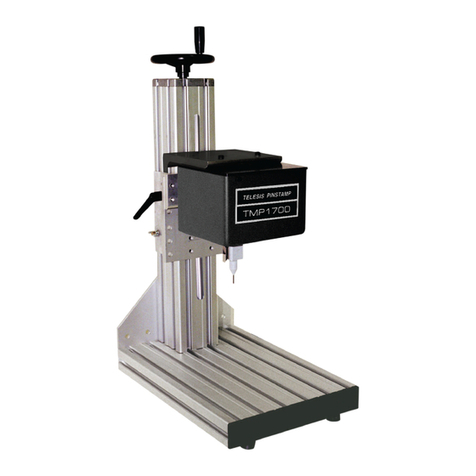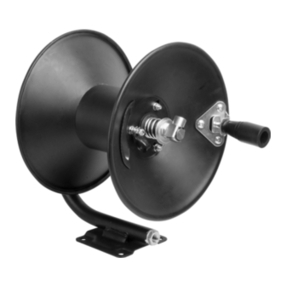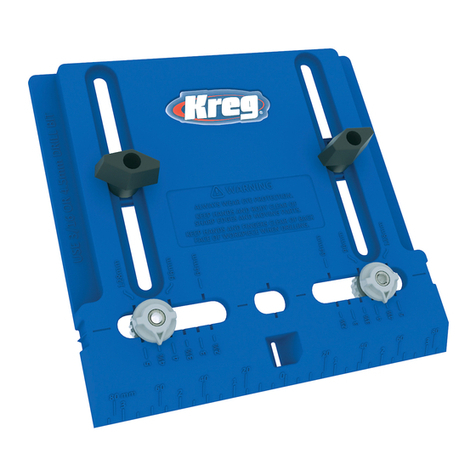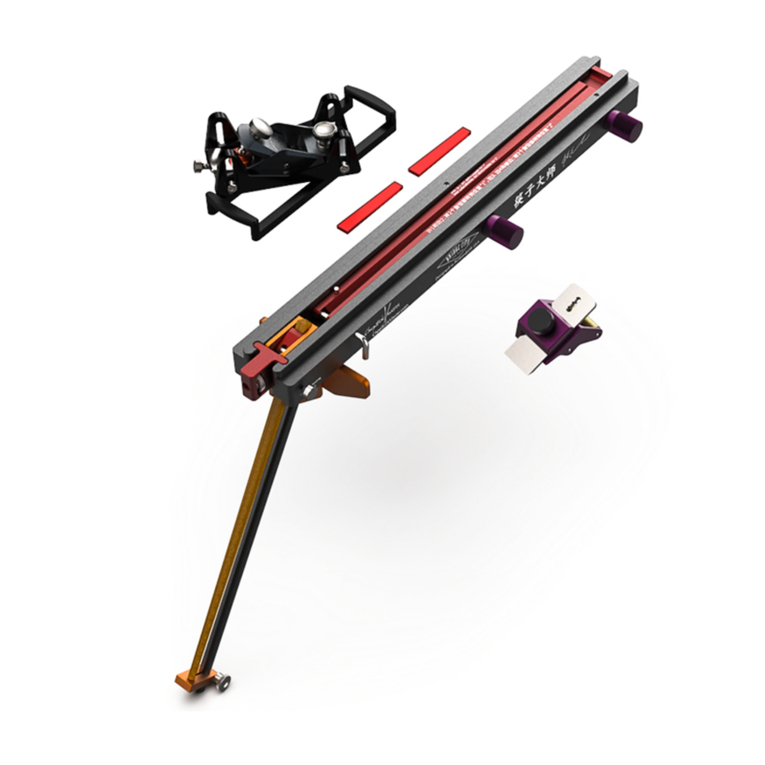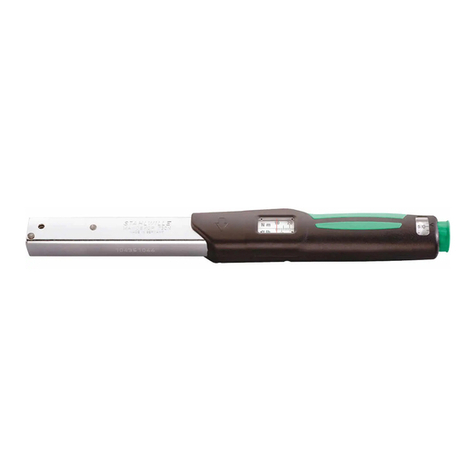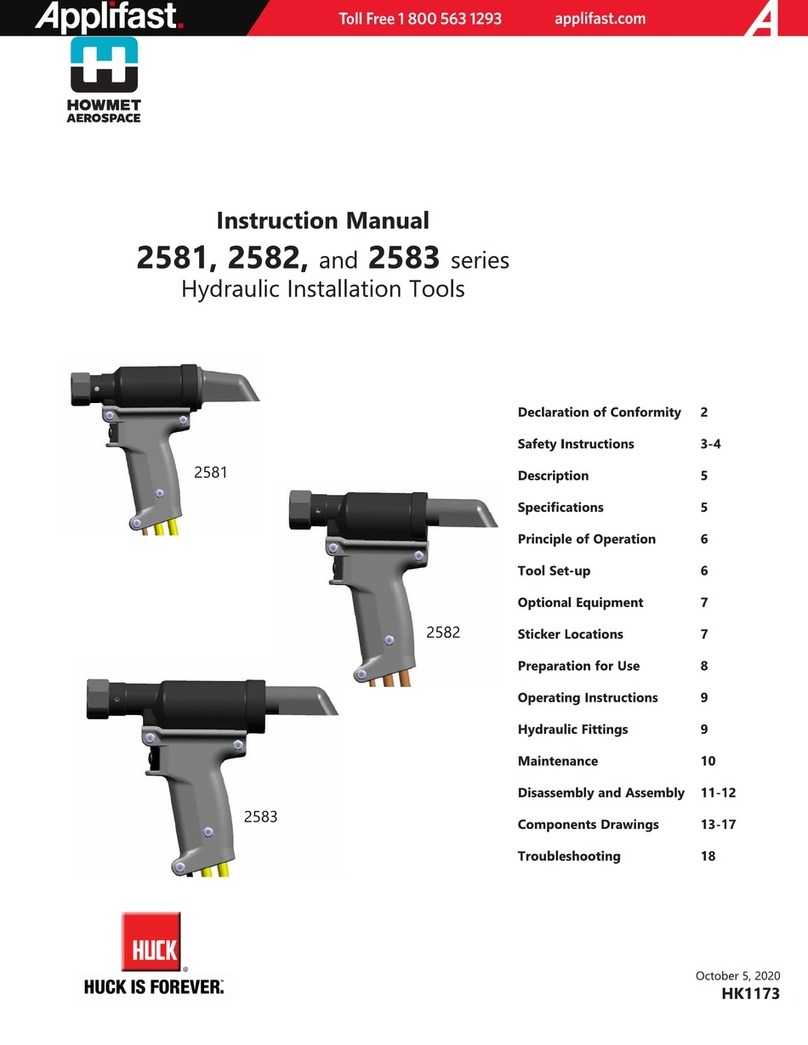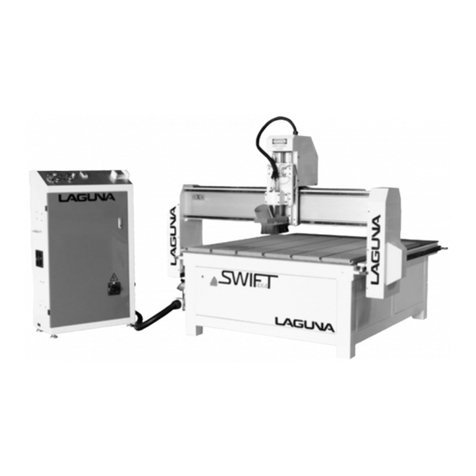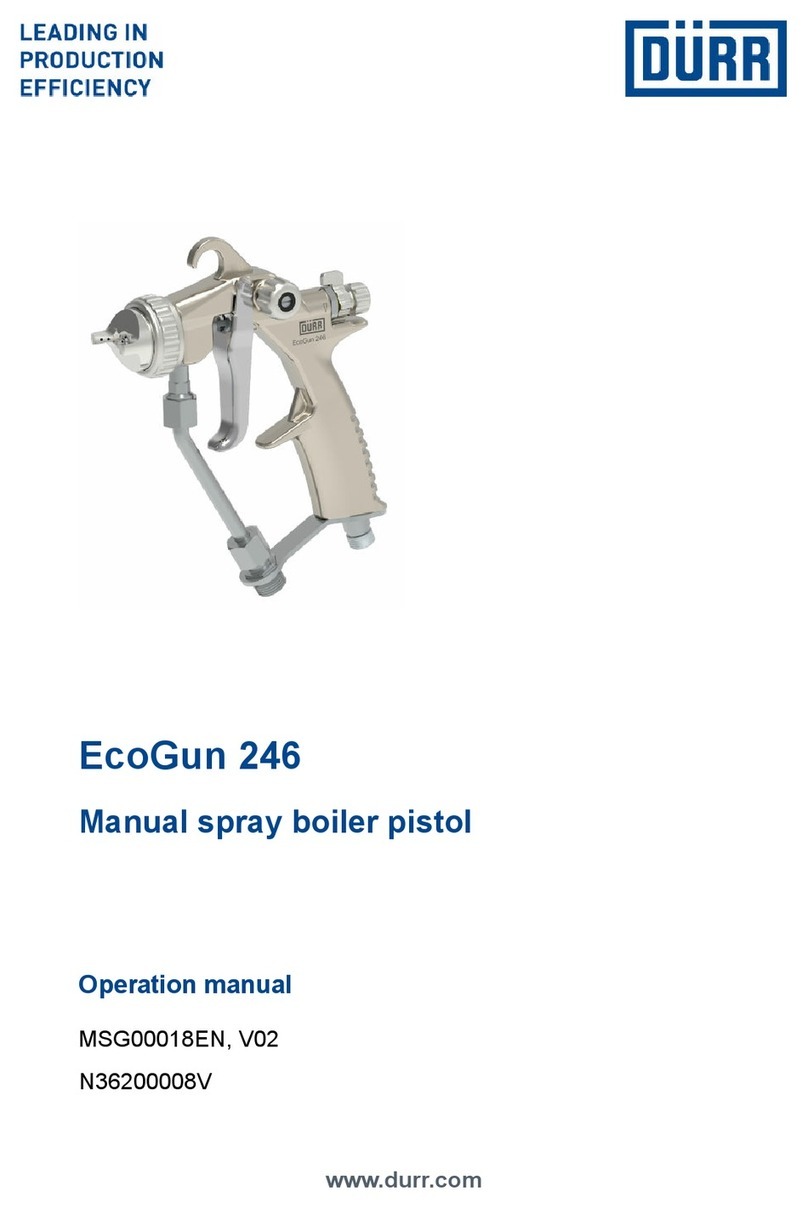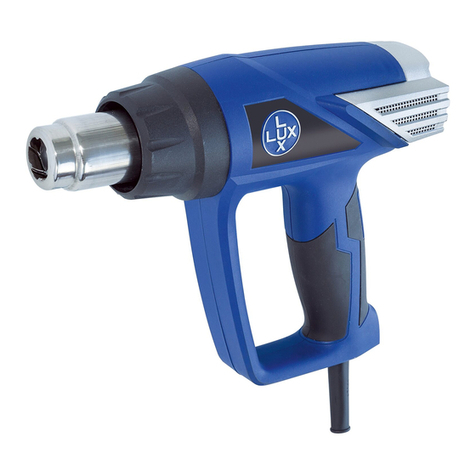Topmodel Finesse Max F3Q User manual

ATTENTION !
Ce modèle à construire n’est pas un jouet, il
ne convient pas aux enfants de moins de 14 ans.
Une mauvaise utilisation de ce matériel peut
provoquer des dommages matériels ou corporels.
Vous êtes pleinement responsable
lorsque vous utilisez votre modèle.
Volez à une distance de sécurité des zones
habitées.
Soyez sûr que personne n’émet sur la même
fréquence que vous.
CAUTION !
This model construction kit is not a toy and is not
suitable for children under the age of 14.
Incorrect use of this material could cause material
damage ou personal injury.
You are fully responsible for your actions when you
use this model.
Fly at a safe distance from occupied zones.
Be sure that no one else is using the same
frequency as you.
Distribué par / Distributed by:
TOPMODEL S.A.S.
Le jardin d’entreprises de SOLOGNE - F-41300 SELLES SAINT DENIS - www.topmodel.fr
#020F013 ©TOPMODEL JAN2018 V1.2
Caractéristiques techniques/Technical data:
Envergure/wingspan: 4.01m
Longueur/length: 1.865m
Poids/TO weight: 3.9 / 5.0kg (ballast)
Surface/wing area: 86.2dm2
Profil/airfoil: SPECIAL 1/9>1/8
Equipements recommandés/Related items:
Radio/RC set: Récepteur/receiver: JETI DUPLEX R11 EPC EX
Ailerons/ailerons: 2 servos TOPMODEL DS5607 MG HV
Profondeur/elevator: 1 servo TOPMODEL DS5607 MG HV
Direction/rudder: 1 servo TOPMODEL HV24012MG
Volets/flaps: 2 servos TOPMODEL DS5607 MG HV
Crochet de Rmq/tow hook: 1 servo TOPMODEL HV24012MG
Accu Rx/Rx battery pack: 1 pack XPower Xtreme 60C 7.4V 5000mAh MPX male
Divers:
Voir liste détaillée page 6 / See the detail list page 6.
ADV
Pour modélistes ayant
un bon niveau
For advanced
modellers
PLANEUR DE COMPETITION F3Q
F3Q COMPETITION SAILPLANE
Order N° 020F013

2
MERCI
d’avoir choisi le planeur de compétition tout composites Finesse Max!
Nous avons fait un grand effort en dessinant et construisant ce planeur pour qu’il soit le meilleur modèle que vous ayez jamais construit et fait
voler.
Nous vous fournissons un kit avec la plus haute qualité et les meilleures performances possibles.
Nous vous souhaitons un grand succès en assemblant et en faisant évoluer votre nouveau
Finesse Max TOPMODEL.
Le
Finesse Max
a été développé pour les compétitions de type vol à voile remorqué (F3Q).
Pour ce faire, le modèle doit être suffisamment voilier pour tenir l’air pendant 8 minutes largué à 200m de hauteur. Mais il doit aussi
suffisamment accélérer pour couvrir une distance de 1000m (4 bases de 250m et 3 virages) le plus vite possible, toujours à partir d’une
hauteur de 200m.
En se basant sur l’expérience accumulée sur le Vz Max (notre premier F3Q), nous vous avons concocté un modèle rassemblant le meilleur
des 2 mondes: vol thermique et vitesse.
Facile à exploiter et très élégant, le
Finesse Max
est bien sûr un planeur tout composites moulé (verre, carbone et kevlar), équipé de volets
de courbure et fabriqué suivant les dernières technologies avec le plus grand soin.
En utilisation loisirs, il est aussi possible de le motoriser en électrique pour les modélistes qui recherchent un planeur très performant et
polyvalent et qui “marche fort” partout, à la plaine comme à la pente.
IMPORTANT: Merci de bien vouloir lire et étudier cette notice de montage avant de commencer l’assemblage. Faire l’inventaire des pièces à
l’aide de la nomenclature pour contrôler qu’il n’y a pas de manquant ou d’imperfection.
Merci de contacter immédiatement TOPMODEL si vous constatez une pièce manquante ou une pièce endommagée.
GARANTIE: Il est important de notifier à TOPMODEL tous dommages ou problèmes avec ce modèle dans les 14 jours suivant la réception du
kit pour bénéficier de la garantie. En cas de retour du modèle, le client est responsable du transport et le port retour est à sa charge. En cas
de défaut, la pièce sera échangée ou remplacée une fois que celle-ci sera réceptionnée par TOPMODEL pour expertise (transport à la charge
du propriétaire). En cas de problème, n’hésitez pas à contacter TOPMODEL.
TOPMODEL ne peut pas contrôler la dextérité du modéliste et ne peut pas influencer le constructeur durant l’assemblage ou l’utilisation de ce
modèle radio-commandé. Aussi, nous ne pouvons, en aucun cas, être tenus responsables des dégâts matériels, accidents corporels ou décès
pouvant être causés par ce modèle réduit.
L’acheteur/utilisateur accepte toutes les responsabilités en cas de problèmes structurels ou mécaniques.

3
THANK YOU for your purchase of the all molded competition sailplane
Finesse Max!
We made a main effort while drawing and building this sailplane so that it is the best model you ever built and fly.
We provide you a kit with the highest quality and the best possible performances.
We wish you a great success while assembling and flying your new
Finesse Max TOPMODEL.
The Finesse Max was developed for gliding competitions (depart towed by a plane) (F3Q).
To do this, the model must be good in thermals enough to hold the air for 8 minutes dropped from 200m height. But it must also accelerate
enough to cover a distance of 1000m (4 bases of 250m and 3 turns) as fast as possible, always from a height of 200m.
Based on the experience gained on the Vz Max (our first F3Q), we have designed a sailplane that combines the best of both worlds: thermal
flight and speed.
Easy to operate and very elegant, the Finesse Max is of course a all-composite glider (glass, carbon and kevlar), equipped with camber flaps
and manufactured according to the latest technologies with the greatest care.
For leisure purpose, it is also possible to power her with an electric motor for modelers who are looking for a very powerful and versatile
glider and which «works hard» everywhere, on the flat as at the slope
IMPORTANT: Please take a few moments to read this instruction manual before beginning assembly. Do an inventory of the parts using the
parts list, to control that there is no lack or imperfection.
Thank you to contact TOPMODEL immediately, if you note a missing part or a damaged part.
WARRANTY: It is important to notify to TOPMODEL all damage or problems with this model within 14 days following the reception of the kit to
be able to benefit the warranty. In the event of return of the model, the customer is responsible for transport and return shipping cost is at his
expenses. In the event of defect, the part will be exchanged or replaced once this one will be delivered to TOPMODEL for expertise (transport
on your cost). In the event of problem, do not hesitate to contact TOPMODEL.
TOPMODEL cannot control the dexterity of the modeler and cannot influence the builder during the assembly or the use of this radiocontrolled
model, thus TOPMODEL will in no way accept or assume responsability or liability for damages resulting from the use of this user assembled
product.
The purchaser/user accepts all the responsibilities in the event of structural or mechanical problems.

4

5
CONTENU DU KIT
KIT CONTENT
FUSELAGE PARTS RUDDER
(A) Fuselage.......................................................................................................... 1
(B) Rudder.............................................................................................................1
(C) Rudder upper axle........................................................................................... 1
(D) Rudder upper bearing.....................................................................................1
(E) Rudder lower axle............................................................................................1
(F) Rudder lower bearing. ..................................................................................... 1
(G) M2 ball clevis................................................................................................... 1
(H) M2 thread coupler ..........................................................................................1
(I) Rudder control horn (ball) ...............................................................................1
(J) Rudder inner control (1.5mm music wire) .......................................................1
FUSELAGE PARTS WHEEL AND RC
(A) Wheel...............................................................................................................1
(B) Wheel holder assembly (plywood).............................................................1 set
(C) Wheel axle (music wire)...................................................................................1
(D) Wheel stopper.......................................................................................... 2 sets
(E) Radio tray (plywood)................................................................................. 1 set
(F) Radio tray support .......................................................................................... 2
COCKPIT PARTS
(A) Canopy and canopy frame.........................................................................1 set
(B) Seat (ABS).......................................................................................................1
(C) Casquette tableau de bord (ABS). ..................................................................1
(D) Instrument panel (hard plastic CNC machined). .............................................1
(E) Flying instruments (sticker)....................................................................... 1 set
VARIOUS
Construction manual.............................................................................................. 1
WINGS PARTS
(A) Wing (with aileron and flap) ..........................................................(L/R) 1 each
(B) Carbon wing joiner ..........................................................................................1
(C) Ailerons servo tray (CNC machined plywood) .................................................2
(D) Ailerons pushrod (fiberglass) .........................................................................2
(E) Ailerons IDS servo arm (plastic) .....................................................................2
(F) Ailerons servo arm axis (treated steel) ..........................................................2
(G) Ailerons servo ball bearing .............................................................................2
(H) Ailerons servo bearing (fiberglass) ................................................................2
(I) Ailerons control horn axis (treated steel) ........................................................2
(J) Flaps servo tray (CNC machined plywood) ......................................................2
(K) Flaps pushrod (fiberglass)..............................................................................2
(L) Flaps IDS servo arm (plastic)..........................................................................2
(M) Flaps servo arm axis (treated steel)..............................................................2
(N) Flaps servo ball bearing..................................................................................2
(O) Flaps servo bearing (fiberglass).....................................................................2
(P) Flaps control horn axis (treated steel) ...........................................................2
(Q) Ailerons servo hatch (carbonfiber).................................................................2
(R) Flaps servo hatch (carbonfiber) ..................................................................... 2
(S) MPX male connector........................................................................................ 2
(T) MPX female connector..................................................................................... 2
HORIZONTAL EMPENNAGE PARTS
(A) Horizontal empennage
(with ball control horn in place) ............................................................................1
(B) Hor. empennage attachment (CS M4x15mm).................................................2
(C) Elevator servo tray (CNC machined plywood).................................................1
(D) Elevator pushrod (carbon tube) .....................................................................1
(E) Elevator IDS servo arm (plastic)..................................................................... 1
(F) Elevator servo arm axis (treated steel)..........................................................1
(G) Elevator servo ball bearing .............................................................................1
(H) Elevator servo bearing (fiberglass)................................................................1
(I) M2 ball clevis....................................................................................................1
(J) M2 threaded coupler........................................................................................1
(K) Elevator IDS special clevis (fiberglass) ...........................................................1
(L) M3 threaded rod (L=40mm)..........................................................................1
(M) Elevator servo hatch (carbonfiber)................................................................1
PIECES FUSELAGE DIRECTION
(A) Fuselage.......................................................................................................... 1
(B) Volet de direction ............................................................................................ 1
(C) Axe supérieur du volet de direction.................................................................1
(D) Palier supérieur du volet de direction.............................................................1
(E) Axe inférieur du volet de direction. .................................................................1
(F) Palier inférieur du volet de direction. ..............................................................1
(G) Chape à rotule M2...........................................................................................1
(H) Embout de chape à rotule M2 ........................................................................1
(I) Guignol de direction (boule)............................................................................. 1
(J) Commande de direction (CAP Ø1,5mm) ..........................................................1
PIECES FUSELAGE ROUE ET RADIO
(A) Roue ................................................................................................................1
(B) Support de roue (CTP) .............................................................................1 set
(C) Axe de roue (CAP)...........................................................................................1
(D) Bague arrêt de roue. .............................................................................. 2 sets
(E) Platine radio (CTP).................................................................................... 1 set
(F) Support platine radio. .....................................................................................2
PIECES CABINE
(A) Verrière et baquet de verrière ..................................................................1 set
(B) Siège (ABS)..................................................................................................... 1
(C) Casquette tableau de bord (ABS). ..................................................................1
(D) Panneau instrument (plastique dur usiné CNC)..............................................1
(E) Instruments de bord (autocollants)......................................................... 1 set
DIVERS
Notice de construction .......................................................................................... 1
PIECES AILES
(A) Aile (avec aileron et volet) .................................................. (G/D) 1 de chaque
(B) Clé d’aile carbone............................................................................................ 1
(C) Platine servo ailerons (CTP usiné CNC) ..........................................................2
(D) Tringlerie ailerons (fibre de verre) .................................................................2
(E) Bras IDS servo ailerons (plastique)................................................................2
(F) Axe bras servo ailerons (acier traité).............................................................2
(G) Roulement à billes palier servo ailerons .........................................................2
(H) Palier servo ailerons (fibre de verre).............................................................2
(I) Axe guignol ailerons (acier traité)....................................................................2
(J) Platine servo volets (CTP usiné CNC)...............................................................2
(K) Tringlerie volets(fibre de verre)......................................................................2
(L) Bras IDS servo volets (plastique) ...................................................................2
(M) Axe bras servo volets (acier traité)................................................................2
(N) Roulement à billes palier servo volets ............................................................2
(O) Palier servo volets (fibre de verre) ................................................................2
(P) Axe guignol volets (acier traité)......................................................................2
(Q) Trappe servo ailerons (fibre de carbone) ......................................................2
(R) Trappe servo volets (fibre de carbone)..........................................................2
(S) Prise mâle MPX................................................................................................2
(T) Prise femelle MPX............................................................................................ 2
PIECES EMPENNAGE HORIZONTAL
(A) Empennage horizontal
(avec guignol de profondeur à boule en place)....................................................1
(B) Vis fixation empennage hor. (TF M4x15mm)..................................................2
(C) Platine servo profondeur (CTP usiné CNC) .....................................................1
(D) Tringlerie profondeur (tube carbone).............................................................1
(E) Bras IDS servo profondeur (plastique)...........................................................1
(F) Axe bras servo profondeur (acier traité)........................................................1
(G) Roulement à billes palier servo profondeur....................................................1
(H) Palier servo profondeur (fibre de verre)........................................................1
(I) Chape à rotule M2............................................................................................1
(J) Embout de chape à rotule M2..........................................................................1
(K) Chape spéciale IDS profondeur (fibre de verre).............................................1
(L) Tige filetée M3 (L=40mm).............................................................................. 1
(M) Trappe servo profondeur (fibre de carbone).................................................1

6
A RAJOUTER POUR ASSEMBLER CE KIT/ TO BE ADDED TO BUILD THIS KIT
H l Radio
l 1x RC set 12-channel - JETI dc/ds recommended.
l 5x Servo TOPMODEL DS5607MG HV (#200DS5607) (2xAIL,
2xFLAP, 1xELEV)
l 2x Servo TOPMODEL HV24012MG (#200HV24012MG)
(1xRUD, 1xTH)
l 1x Rx LiPo XPower 7,4V 5000mAh LiPo pack
(#09950002S1P29)
l 1x Radio Control Power Switch 10A/MPX JETI
(#007RCPS10)
l 5x TWISTED SERVO WIRE JR 0.30mm² by m (#01610305)
l 1x 8 FUT MALE COLOR CONNECTORS KIT
(#0434074AF)
l 1x 8 JR FEMALE COLOR CONNECTORS KIT
(#0434075AJ)
l Radio
l 1x Ensemble radio 12 voies - JETI dc/ds recommandé.
l 5x Servo TOPMODEL DS5607MG HV (#200DS5607) (2xAIL,
2xVOL, 1xPROF)
l 2x Servo TOPMODEL HV24012MG (#200HV24012MG)
(1xDIR, 1xCR)
l 1x Pack accu Rx LiPo XPower 7,4V 5000mAh
(#09950002S1P29)
l 1x Radio Control Power Switch 10A/MPX JETI
(#007RCPS10)
l 5x CABLE SERVO TORSADE JR 0,30mm² le m (#01610305)
l 1x LOT DE 8 CONNECTEURS COULEUR SERVO FUT A MONTER
(#0434074AF)
l 1x LOT DE 8 CONNECTEURS COULEUR FEMELLE JR A
MONTER (#0434075AJ)
Légende/Legend
l Non inclus/not included
H Anglais/English

7
PIECES AILES
(A) Aile (avec aileron et volet) .......(G/D) 1 de chaque
(B) Clé d’aile carbone .................................................... 1
(C) Platine servo ailerons (CTP usiné CNC)............... 2
(D) Tringlerie ailerons (bre de verre) ...................... 2
(E) Bras IDS servo ailerons (plastique) ..................... 2
(F) Axe bras servo ailerons (acier traité).................. 2
(G) Roulement à billes palier servo ailerons ............. 2
(H) Palier servo ailerons (bre de verre) .................. 2
(I) Axe guignol ailerons (acier traité) ........................ 2
(J) Platine servo volets (CTP usiné CNC)................... 2
(K) Tringlerie volets(bre de verre) .......................... 2
(L) Bras IDS servo volets (plastique) ......................... 2
(M) Axe bras servo volets (acier traité) .................... 2
(N) Roulement à billes palier servo volets................. 2
(O) Palier servo volets (bre de verre)....................... 2
(P) Axe guignol volets (acier traité) ........................... 2
(Q) Trappe servo ailerons (bre de carbone) ............ 2
(R) Trappe servo volets (bre de carbone)................ 2
(S) Prise mâle MPX ....................................................... 2
(T) Prise femelle MPX................................................... 2
l Servo ailerons et volets (DS5607 MG) ............... 2+2
l Fil torsadé servo ......................................... 3,8m env.
l Connecteur servo couleur à monter........................ 4
l Connecteur femelle couleur à monter..................... 4
H WINGS PARTS
(A) Wing (with aileron and ap) ............. (L/R) 1 each
(B) Carbon wing joiner.................................................. 1
(C) Ailerons servo tray (CNC machined plywood).... 2
(D) Ailerons pushrod (berglass) ............................... 2
(E) Ailerons IDS servo arm (plastic).......................... 2
(F) Ailerons servo arm axis (treated steel)............... 2
(G) Ailerons servo ball bearing.................................... 2
(H) Ailerons servo bearing (berglass)...................... 2
(I) Ailerons control horn axis (treated steel)............ 2
(J) Flaps servo tray (CNC machined plywood) ......... 2
(K) Flaps pushrod (berglass) .................................... 2
(L) Flaps IDS servo arm (plastic) ............................... 2
(M) Flaps servo arm axis (treated steel)................... 2
(N) Flaps servo ball bearing......................................... 2
(O) Flaps servo bearing (berglass)............................ 2
(P) Flaps control horn axis (treated steel) ................ 2
(Q) Ailerons servo hatch (carbonber) ...................... 2
(R) Flaps servo hatch (carbonber) ........................... 2
(S) MPX male connector .............................................. 2
(T) MPX female connector ........................................... 2
l Ailerons and aps servo (DS5607 MG).............. 2+2
l Twisted servo cable .............................. approx. 3.8m
l Male color connector................................................. 4
l Female color connector............................................. 4
AILES/WINGS
B
C
JJ
C
E
QR
D
K
L
E
T
S
LM
FE F
MN
G G
NO
H H
OP
I I
P
A
A

8
4) ...sur la photo, à droite, le servo d’aileron avec le
petit bras IDS (E), à gauche le servo de volet avec le
grand bras IDS (L).
H ... on the picture, on the right, the aileron servo with
the short IDS arm (E), on the left the ap servo with
the longer IDS arm (L).
AILES/WINGS
l) Confectionnez les rallonges d’ailerons (2x85cm de
long) et de volets (2x35cm de long). Ne pas monter
les boîtiers plastiques des prises femelles. En même
temps, en proter pour réaliser les rallonges entre
les ailes et le récepteur (longueur 35cm, voir photo11
page17).
H Fabricate the ailerons extensions (2x85cm long)
and aps (2x35cm long). Do not mount the plastic
housings of the sockets. At the same time, take advan-
tage to make the extensions between the wings and
the receiver (length 35cm, see photo11 page17).
2) Connecter les rallonges aux servos d’ailerons en
respectant bien les polarités puis sécuriser à l’aide
d’un morceau de gaine thermorétractable.
H Connect the extensions to the ailerons servos with
correct polarity and then secure with a piece of heat
shrink sleeve.
3) Visser ensuite les servos d’ailerons et de volets
avec les bras IDS réglés au neutre sur les platines en
CTP, le palier en bre de verre contenant le roulement
à billes, quant à lui, sera collé à la colle époxy lente.
Veillez à sélectionner le bon bras de servo IDS…
H Then screw the aileron and ap servos with the IDS
arms centered on the plywood tray, the berglass
bearing with the ball bearing will be glued with epoxy
adhesive. Be sure to select the proper IDS servo arm...
T S
Volet/Flap
Volet/Flap
Volet/Flap
Gaine thermo
Shrinking tube
Gaine thermo
Shrinking tube
Rx 35cm
Aileron 85cm
Aileron 85cm
Volet/Flap 35cm
Volet/Flap 35cm
Aileron
Aileron
Aileron
E
E
H
O
J C
L
L

9
AILES/WINGS
5) Tronçonner les extrémités des vis de xation qui
dépassent des cadres en CTP.
H Cut the ends of the fastening screws that protrude
from the ply frames.
6) Pour une meilleure accroche, dépolir l’intérieur de
l’aile à l’endroit du collage du cadre du servo.
H For a better grip, roughen the inside of the wing at
the bonding area of the servo frame.
7) Protéger le servo à l’aide de scotch d’emballage, ce
qui facilitera un démontage ultérieur (si besoin …).
H Protect the servo with packing tape, which will make
it easier to disassemble later (if necessary...).
8) A droite tringlerie aileron, à gauche tringlerie vo-
let, les connecter sur leur servo respectif à l’aide de
l’axe en acier F et M…
H On the right hand side, aileron pushrod, at left hand
side, aps pushrod, connect them on their respective
servo using the steel shaft F and M ...
DK
Volet/Flap Aileron

10
AILES/WINGS
9) On commence par l’aileron: insérer l’ensemble
dans le logement servo et raccorder la tringlerie (D)
au guignol intégré dans la gouverne à l’aide de l’axe
(I). Cette étape demande beaucoup de minutie an de
ne pas abîmer le bord d’attaque de la gouverne. Il faut
l’abaisser fortement et le maintenir avec du ruban
adhésif papier an d’avoir l’espace nécessaire pour
eectuer cette opération.
H Start with the aileron: insert the assembly into the
servo housing and connect the linkage (D) to the horn
integrated into the control surface using the spindle
(I). This step requires a lot of care so as not to damage
the leading edge of the control surface. It should be
carefully lowered and held with paper tape to allow
space for this operation.
10) Ensuite, remettre la gouverne au neutre et l’im-
mobiliser avec du ruban adhésif papier.
H Then center the aileron and secure it with paper
tape.
11) Coller ensuite le cadre de servo (C) dans l’aile à
l’aide de colle époxy lente. Au préalable, vérier que le
servo est toujours au neutre.
!!!Attention à ne pas marquer la peau de l’aile à l’ex-
trados en collant le servo!!!
H Then glue the servo frame (C) into the wing with
epoxy glue. Make sure that the servo is always at neu-
tral position.
!!! Be careful not to mark the top skin of the wing by
sticking the servo !!!
Dessus de l’aile
Wing top
I
D
Guignol d’aileron
Aileron horn
Adhésif papier
Paper tape
Goller (C)
Glue (C)
D
12) Insérer la rallonge dans l’aile par le puit du servo
après avoir réalisé l’ouverture pour celle-ci dans la
nervure d’emplanture.
H Drill a hole as show through root rib. Then route the
servo extension through the wing from the aileron
servo well to the root.
Découper une ouverture
Drill a hole

11
AILES/WINGS
Ruban adhésif cristal
Crystal tape
13) Recommencer ces étapes pour le servo de volet
en commençant par connecter la rallonge et ajuster
la position du bras de servo (L) suivant le réglage du
buttery de votre radio. On voit ici que le bras est in-
cliné d’environ 30° vers l’avant volet au neutre.
H Repeat these steps for the ap servo by rst connec-
ting the extension and then adjusting the position of
the servo arm (L) according to the setting of the but-
tery of your transmitter. It can be seen here that the
servo arm is inclined approximately 30 ° towards the
front when ap is centered.
14) Ajuster puis xer avec du scotch cristal les caches
servos d’ailerons (Q) et ceux des volets (R).
H Adjust and x the aileron (Q) and ap (R) covers
with crystal tape.
L
Q

12
EMPENNAGE HORIZONTAL/HORIZONTAL EMPENNAGE
1) Confectionner une rallonge (115 cm de long) et y
connecter le servo de profondeur.
H Make an extension (115 cm long) and connect to the
elevator servo.
2) Servo au neutre, le visser sur son cadre (C).
H Servo centered, attach it to its frame (C) with 2 self-
tapping screws.
3) Présenter le stab (A) sur le fuselage et le xer avec
les 2 vis (B).
H Trail t the stab (A) on the fuselage and attach it
with the 2 screws (B).
PIECES EMPENNAGE HORIZONTAL
(A) Empennage horizontal
(avec guignol de profondeur à boule en place) .......... 1
(B) Vis xation empennage hor. (TF M4x15mm). .... 2
(C) Platine servo profondeur (CTP usiné CNC) ......... 1
(D) Tringlerie profondeur (tube carbone) ................. 1
(E) Bras IDS servo profondeur (plastique)................ 1
(F) Axe bras servo profondeur (acier traité) ............ 1
(G) Roulement à billes palier servo profondeur........ 1
(H) Palier servo profondeur (bre de verre) ............. 1
(I) Chape à rotule M2.................................................... 1
(J) Embout de chape à rotule M2................................ 1
(K) Chape spéciale IDS profondeur (bre de verre). 1
(L) Tige letée M3 (L=40mm) ..................................... 1
(M) Trappe servo profondeur (bre de carbone)...... 1
l Fil torsadé servo .............................................1m env.
l Connecteur servo couleur à monter........................ 1
l Connecteur femelle couleur à monter..................... 1
HORIZONTAL EMPENNAGE PARTS
(A) Horizontal empennage
(with ball control horn in place).................................. 1
(B) Hor. empennage attachment (CS M4x15mm). ... 2
(C) Elevator servo tray (CNC machined plywood).... 1
(D) Elevator pushrod (carbon tube) ........................... 1
(E) Elevator IDS servo arm (plastic).......................... 1
(F) Elevator servo arm axis (treated steel)............... 1
(G) Elevator servo ball bearing ................................... 1
(H) Elevator servo bearing (berglass) ..................... 1
(I) M2 ball clevis............................................................ 1
(J) M2 threaded coupler .............................................. 1
(K) Elevator IDS special clevis (berglass) ............... 1
(L) M3 threaded rod (L=40mm).................................. 1
(M) Elevator servo hatch (carbonber)..................... 1
l Twisted servo cable .................................. approx.1m
l Male color connector................................................. 1
l Female color connector............................................. 1
A
B
C
M
C
A
BB
EH
D
E FGH
IJ
K L

13
EMPENNAGE HORIZONTAL/HORIZONTAL EMPENNAGE
4) Présentez le servo au dessus de son logement ainsi
que les éléments constituant la commande de pro-
fondeur, (K), (L), (D), (J), (I). Ajuster la longueur du
tube carbone (D). Coller côté servo le morceau de tige
letée (L) à l’intérieur du tube carbone puis y visser la
chape en bre verre spéciale IDS (K).
H Place the servo above its housing as well as the ele-
ments constituting the elevator control, (K), (L), (D),
(J), (I). Adjust the length of the carbon tube (D). Glue
the threaded rod (L) to the inside of the carbon tube at
the servo side and screw in the special IDS glassber
clevis (K).
5) Visser la chape à rotule (I) sur l’embout (J). Dépolir
celui-ci et réaliser quelques entailles à la lime comme
montré sur la photo. Coller ensuite solidement, à la
colle époxy, l’embout de chape dans le tube carbone
(D).
H Screw the ball clevis (I) onto the threaded coupler
(J). Scratch it and make a few notches with a le as
shown in the picture. Then glue the coupler securely
with epoxy adhesive into the carbon tube (D).
6) Insérer l’ensemble dans le fuselage par la trappe
sur le côté de la dérive. Connecter la tringlerie au vo-
let de profondeur immobilisé au neutre. Coller ensuite
la platine servo (C) dans le fuselage après avoir dépoli
la zone de collage et protégé le servo.
H Insert the whole assembly into the fuselage through
the hatch. Connect the linkage to the elevator immo-
bilized to the neutral. Then glue the servo frame (C)
into the fuselage after the fastening area has scrat-
ched and the servo protected.
7) Une fois sec, vérier le mouvement du volet de pro-
fondeur (pas de point dur, ni frottement), ajuster le
trou par lequel passe la chape à boule si nécessaire.
Ajuster puis xer avec du scotch cristal le cache servo
de profondeur (M).
H Once dry, check the movement of the elevator (no
hard point or friction), adjust the hole through which
the ball clevis passes if necessary.
Adjust and x the elevator servo cover (M) with crys-
tal tape.
D
D
C
I
J
K
L
IJ

14
FUSELAGE > DIRECTION/FUSELAGE > RUDDER
1) Visser/coller le guignol (I) dans le volet de direc-
tion. Souder l’embout de chape (H) sur la CAP (J),
visser la chape (G) puis connecter sur le guignol de
direction.
H Screw/glue the horn (I) into the rudder. Solder the
coupler (H) to the music wire (J), screw the clevis (G)
and then connect to the rudder control horn.
2) Dépolir les zones de collage des deux paliers du vo-
let de direction puis les xer au volet de dérive avec
les axes du volet de direction (C) et (E).
H Sand the bonding areas of the two bearings of the
rudder and attach them to the rudder with the top (C)
and bottom (E) axles.
3) Présenter l’ensemble à l’arrière du fuselage (A),
veillez à ne coller que les 2 paliers dans l’étambot.
N’utilisez que très peu de colle époxy dans un premier
temps, puis, une fois sec, le collage des deux paliers
(D) et (F) sera renforcé avec un peu de colle époxy
chargée de microballons.
H Fit the assembly to the rear of the fuselage (A), make
sure to glue only the 2 bearings in the rudder closing
post. Use only a small amount of epoxy adhesive at
rst, then, after drying, the bonding of the two bea-
rings (D) and (F) will be reinforced with a little epoxy
adhesive loaded with microballoons.
PIECES FUSELAGE DIRECTION
(A) Fuselage ................................................................... 1
(B) Volet de direction .................................................... 1
(C) Axe supérieur du volet de direction. .................... 1
(D) Palier supérieur du volet de direction. ................ 1
(E) Axe inférieur du volet de direction....................... 1
(F) Palier inférieur du volet de direction. .................. 1
(G) Chape à rotule M2................................................... 1
(H) Embout de chape à rotule M2 ............................... 1
(I) Guignol de direction (boule)................................... 1
(J) Commande de direction (CAP Ø1,5mm) .............. 1
FUSELAGE PARTS RUDDER
(A) Fuselage ................................................................... 1
(B) Rudder...................................................................... 1
(C) Rudder upper axle. ................................................. 1
(D) Rudder upper bearing. ........................................... 1
(E) Rudder lower axle................................................... 1
(F) Rudder lower bearing. ............................................ 1
(G) M2 ball clevis........................................................... 1
(H) M2 thread coupler.................................................. 1
(I) Rudder control horn (ball) ..................................... 1
(J) Rudder inner control (1.5mm music wire) ......... 1
C
B
E
F
J
J
DG
G
H
H
I
I
F
F
D
D
E
C
A

15
FUSELAGE > ROUE et RADIO/FUSELAGE > WHEEL AND RC
1) Repérez la position de la roue (l’axe de la roue est
7mm en avant du bord d’attaque de l’aile) et tracer
le contour de la partie à découper (dimensions de la
roue + 1mm de part et d’autre).
H Locate the position of the wheel (the wheel axis
is 7mm in front of the leading edge of the wing) and
trace the contour of the part to be cut (wheel dimen-
sions + 1mm on both sides).
2) Découper soigneusement le passage de la roue.
H Carefully cut the opening for the wheel.
3) Dépolir l’intérieur du fuselage aux endroits du col-
lage de la platine radio et du support de train.
H Sand the inside of the fuselage at the locations of the
bonding of the RC tray and the wheel holder.
B
A
E
FC
D
PIECES FUSELAGE ROUE ET RADIO
(A) Roue.......................................................................... 1
(B) Support de roue (CTP) ..................................... 1 set
(C) Axe de roue (CAP). ................................................. 1
(D) Bague arrêt de roue........................................ 2 sets
(E) Platine radio (CTP) ........................................... 1 set
(F) Support platine radio. ............................................ 2
l Servo direction et CR (HV24012MG) ................. 1+1
FUSELAGE PARTS WHEEL AND RC
(A) Wheel........................................................................ 1
(B) Wheel holder assembly (plywood).................. 1 set
(C) Wheel axle (music wire). ....................................... 1
(D) Wheel stopper.................................................. 2 sets
(E) Radio tray (plywood) ....................................... 1 set
(F) Radio tray support.................................................. 2
l Rudder and Tow Hook servo (HV24012MG) ..... 1+1

16
4) Assemblez les éléments (A), (B), (C) et (D) consti-
tuant le train et coller les éléments du support (B)
ensemble à la colle époxy lente comme montré...
H Assemble the elements (A), (B), (C) and (D) consti-
tuting the xed landing gear and glue the elements of
the wheel holder (B) together with slow epoxy adhe-
sive as shown ....
5) ... puis positionner et coller celui-ci dans le fuselage
(utiliser la platine radio (E) pour le centrer).
Une fois sec, renforcer le collage à l’aide de résine
époxy et tissu de verre ou de carbone.
H ... then position and glue it into the fuselage (use the
RC tray (E) to center it).
Once dry, reinforce the bonding using epoxy resin and
glass or carbon cloth.
FUSELAGE > ROUE et RADIO/FUSELAGE > WHEEL AND RC
A
B
B
AC
C
D
6) Coller ensuite la platine radio (E) (celle-ci s’en-
castre à l’arrière sur le support de train). Renforcer
également le collage à l’aide de tissu de verre ou car-
bone en faisant bien remonter le tissu sur les ancs
du fuselage (Fig.1).
H Then glue the tray (E). Reinforce the bonding with
glass or carbon cloth by making the fabric rise up to
the sides of the fuselage (Fig.1).
7) Coller le support de la gaine direction sur la platine
après avoir passé la gaine de direction dedans.
Mettre le servo de direction au neutre puis le visser
sur la platine.
H Glue the outer rudder rod holder onto the tray after
passing the outer rod in.
Put the rudder servo in neutral position and screw it
onto the tray.
E
Biseauter
Beavel
Corer balsa (non fourni)
Balsa sheeting (not included)
Support de gaine
Outer rod support
Tissu de verre
Fiberglass fabric
Platine /Tray
Fuselage
Colle epoxy/Glue
Fig.1

17
FUSELAGE > ROUE et RADIO/FUSELAGE > WHEEL AND RC
9) Commande crochet de remorquage: réaliser un
trou oblong d’environ 10x3mm sur le côté du fuselage
à environ 30mm du nez. Maintenir en face de ce trou
une chute de gaine plastique Ø2mm int. d’environ
150mm de long et la coller à l’intérieur contre le anc
du fuselage.
H Tow Hook Control: Make an oblong hole of approxi-
mately 10x3mm on the side of the fuselage about
30mm from the nose. Keep in front of this hole a plas-
tic rod (inner diameter 2mm) about 150mm long and
glue it inside against the side of the fuselage.
10) Après avoir vissé le servo du crochet de remor-
quage sur la platine, y raccorder une chute de CAP
Ø1.5mm en réalisant une baïonnette. Ajuster la lon-
gueur de la tringlerie pour un fonctionnement optimal
du crochet.
H After screwing the tow hook servo to the RC tray,
attach a 1.5mm music wire to the arm with a Z-bend.
Adjust the length of the linkage for optimal operation
of the hook.
11) Connecter les rallonges entre les ailes et le récep-
teur ainsi que l’inter électronique RC SWITCH (op-
tion).
H Connect the extension cables between the wings and
the receiver as well as the RC SWITCH (optional).
8) Connecter la tringlerie au palonnier en réalisant
une baïonnette (le neutre de la gouverne peut être
ensuite ajusté en vissant/dévissant la chape à boule
côté volet de direction).
H Connect the linkage to the rudder servo arm by ma-
king a Z-bend (the neutral of the rudder can then be
adjusted by screwing / unscrewing the ball clevis on
the rudder side).
G
F

18
FUSELAGE > ROUE et RADIO/FUSELAGE > WHEEL AND RC
13) Fixer l’accu de réception sur son support en CTP à
l’aide d’une sangle et velcro® puis…
H Attach the receiver battery pack to its ply plate
using a strap and velcro® and then ...
12) Installer le récepteur dans le fuselage à l’aide de
velcro® ou ruban adhésif double-face.
Soignez la disposition des antennes de réception!
H Install the receiver in the fuselage using velcro®
band or double-sided tape.
Pay attention to the layout of the Rx antennas!
14) ... enduire généreusement de colle époxy + micro
ballon la partie inférieure du support et positionner
le tout en place dans le fuselage.
H ... generously coat with epoxy adhesive + micro-bal-
loon the lower part of the plate and position it all in
place into the fuselage.
1) Le système de fermeture verrière est déjà en
place. Nous vous laissons le soin d’organiser et de
décorer la cabine selon votre goût.
H The canopy locking system is already in place. We
leave you the task of organizing and decorating the
cockpit according to your taste.
BONS VOLS / PLEASANT FLIGHTS!
PIECES CABINE
(A) Verrière et baquet de verrière ........................ 1 set
(B) Siège (ABS).............................................................. 1
(C) Casquette tableau de bord (ABS).......................... 1
(D) Panneau instrument
(plastique dur usiné CNC)
... 1
(E) instruments de bord (autocollants) ............... 1 set
COCKPIT PARTS
(A) Canopy and canopy frame............................... 1 set
(B) Seat (ABS) ............................................................... 1
(C) Casquette tableau de bord (ABS).......................... 1
(D) Instrument panel
(hard plastic CNC machined)
... 1
(E) Flying instruments (sticker)........................... 1 set

19
CENTRAGE
CG LOCATION
110 mm
Centrage: A l’atelier, prêt au vol, porter le modèle sur les index de chaque côté du fuselage, à l’emplanture de l’aile, après avoir reporté
les repères de centrage (voir schéma ci-dessous).
Si le modèle penche vers l’avant (nez lourd) déplacer l’accu vers l’arrière.
Si le modèle penche vers l’arrière (queue lourde) déplacer l’accu vers l’avant.
Le planeur est correctement centré quand il penche très légèrement vers l’avant avec les index pile-poil à cheval sur
les repères.
Plage de centrage: 110 mm du bord d’attaque à l’emplanture de l’aile.
Notes:
Le centrage s’obtient sans plomb avec les équipements recommandés (changer la position du pack d’accu de réception si
nécessaire).
Balance: In workshop, ready to fly, carry the model on the fingers on each side of the fuselage at the wing root, after having drawn the
balance marks (see photo below).
If the model leans forwards (nose heavy), move the battery backwards.
If the model leans backwards (tail heavy), move the battery forwards.
The sailplane is correctly balanced when it leans very slightly forwards with the index on the reference marks.
CG location determines (inter alia) the stall characteristics.
CG range from 110 mm measured from the leading edge at the root of the wing.
Note sur les réglages:
Les réglages donnés ici le sont à titre indicatif, pour notre prototype centré à 110mm du bord d’attaque à l’emplanture.
Il convient à chaque modéliste d’adapter ces réglages conseillés, à ses propres habitudes et convenances.
Note about settings:
The settings shown here are indicative, for our prototype balanced at 110mm from the leading edge at the root of the wing.
It is suitable for every modeller to adapt these recommended settings, its own habits and conventions.
Pour piloter votre planeur avec précision, TOPMODEL recommande les ensembles de radiocommande JETI Duplex
To control your sailplane accurately, TOPMODEL recommends JETI Duplex radio sets
DEBATTEMENTS DES GOUVERNES
CONTROLS THROWS
CourseAilerons
Aileronstroke
Courseprofondeur
Elevatorstroke
Coursedirection
Rudderstroke
Note sur les réglages:
Les réglages donnés ici le sont à titre indicatif, pour notre prototype
centré à 110mm du bord d’attaque à l’emplanture.
La position du centrage aura un impact sur les compensations de
profondeur des phases de vol. Le débattement des volets en position
aérofrein aura également un impact important sur la compensation de
profondeur.
Il convient à chaque modéliste d’adapter ces réglages conseillés, à ses
propres habitudes et convenances.
High 8mm Expo 20%
Low 6mm Expo 15%
High 16mm Expo 20%
Low 12mm Expo 15%
High 8mm Expo 20%
Low 6mm Expo 15%
High 8mm Expo 20%
Low 6mm Expo 15%
High 50mm Low 35mm
High 50mm Low 35mm

20
Aérofreins
Airbrakes
100% Ailerons > 35%Volets
100% Ailerons > 35% Flaps
Exemple
Example
MIXAGES
MIXING
Coursevolets
Flapsstroke
CourseAilerons
CourseAilerons
Aileronstroke
Aileronstroke
Courseprofondeur
Elevatorstroke
Coursevolets
Flapsstroke
Max 50mm
8mm
8mm
2.8mm
4mm
Snap-Flap
Uniquement à cabrer
Only elevator up
Quand profondeur cabré à fond
When Elevator fully up
Coursevolets
Flapsstroke
CourseAilerons
Aileronstroke
5mm
5mm
Normal «lisse»
Clean
Courbure positive (durée)
Soaring (duration)
Courbure négative (vitesse)
Speed
PHASES DE VOL
Flight Modes
Coursevolets
Flapsstroke
Toutesgouvernes
Allcontrolsurfaces 0
CourseAilerons
Aileronstroke
Coursevolets
Flapsstroke
CourseAilerons
Aileronstroke
3mm
Course réduite à 10% / Stroke reduced to 10%
7mm
2mm
4mm
Coursedirection
Rudderstroke
Table of contents
Popular Tools manuals by other brands
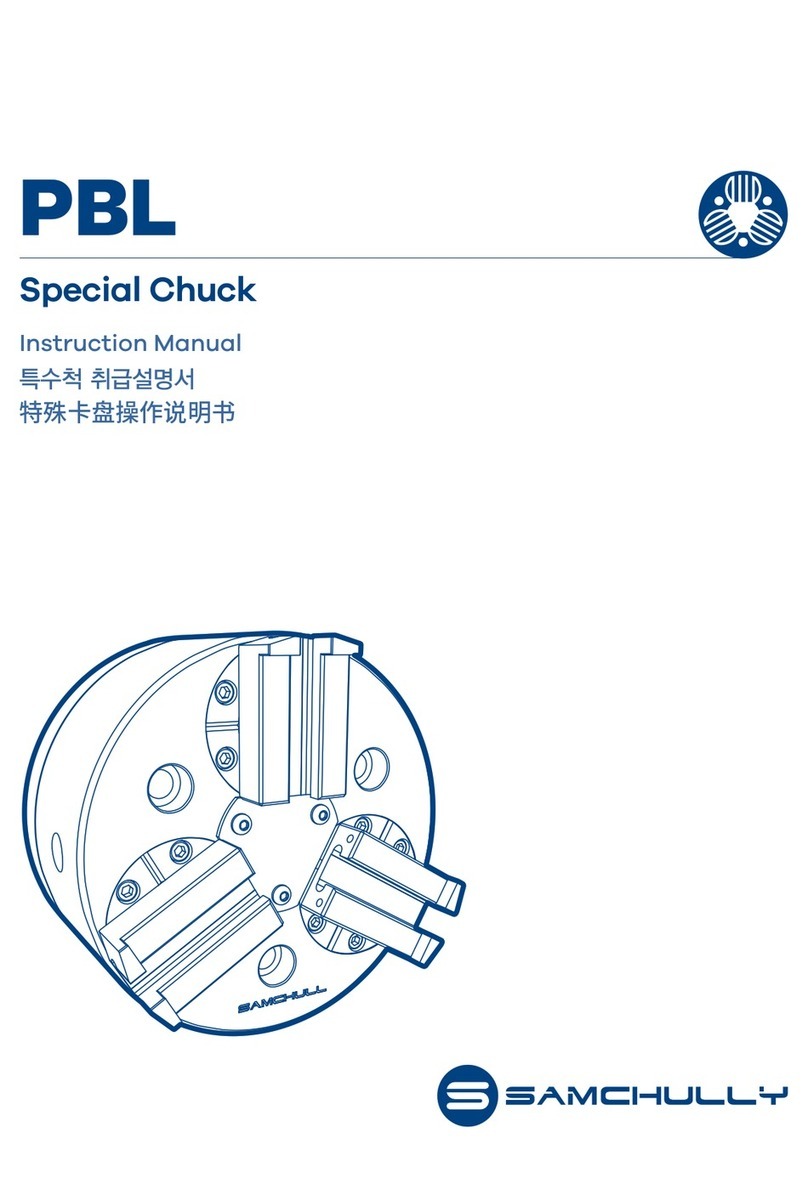
SAMCHULLY
SAMCHULLY PBL instruction manual

Bosch
Bosch 3814 - 14 Inch Abrasive Cut Operating/safety instructions

Pittsburgh Automotive
Pittsburgh Automotive 95987 quick start guide
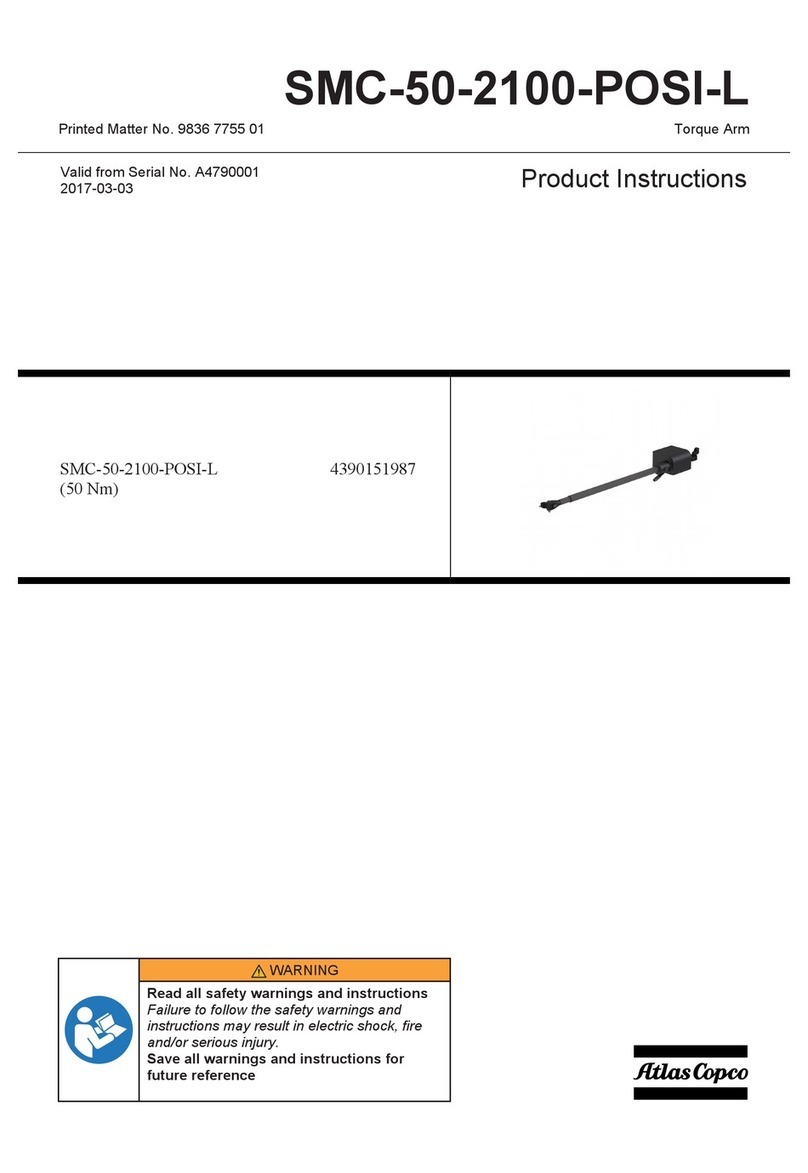
Atlas Copco
Atlas Copco SMC-50-2100-POSI-L Product instructions
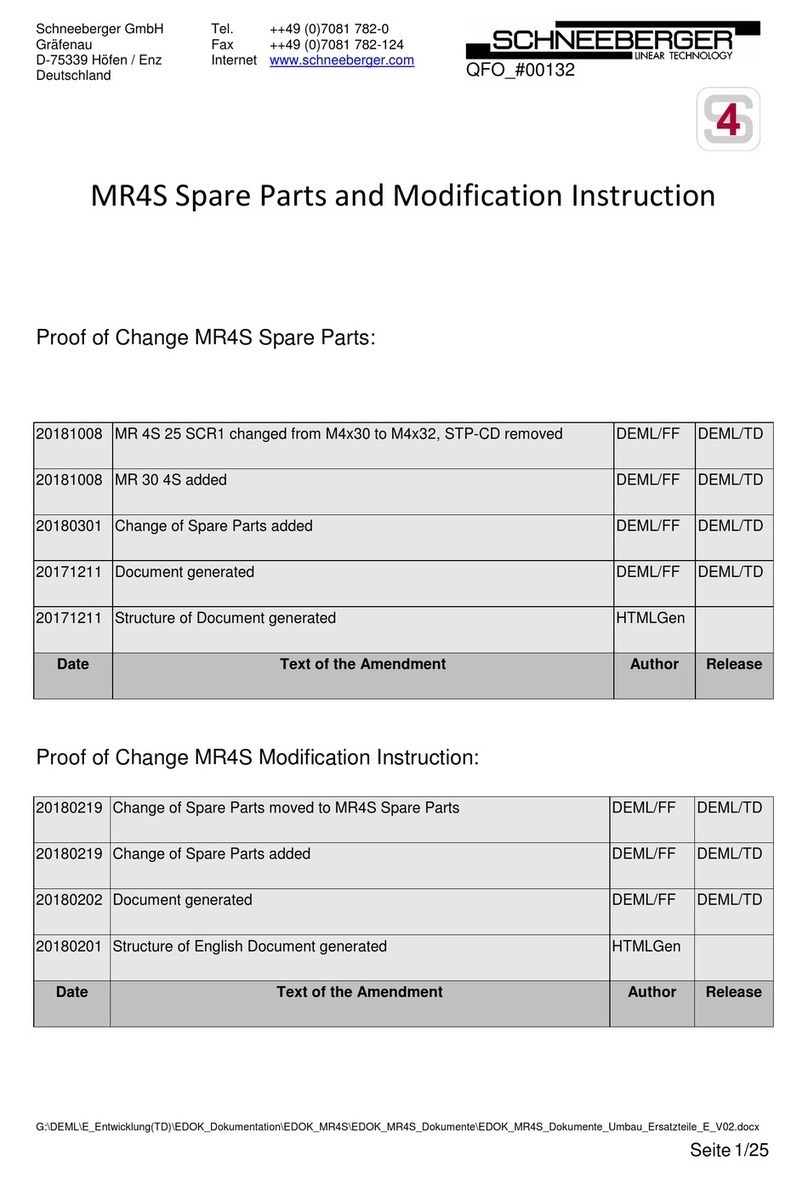
Schneeberger
Schneeberger MR4S Modifiers guide
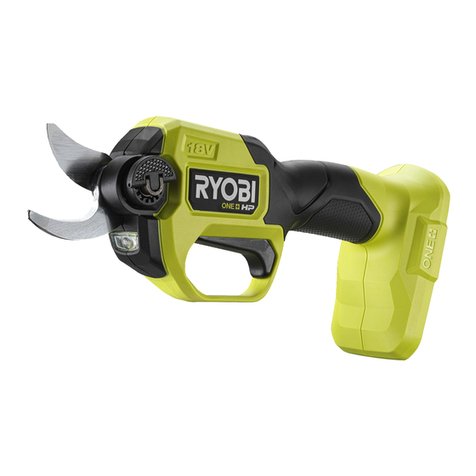
Ryobi
Ryobi RY18SCXA manual


